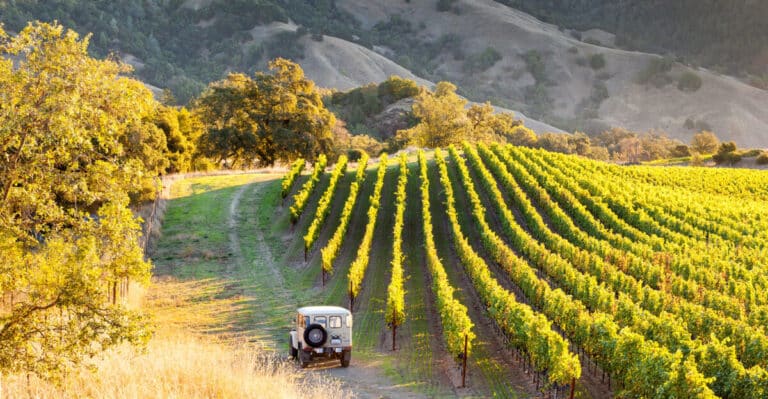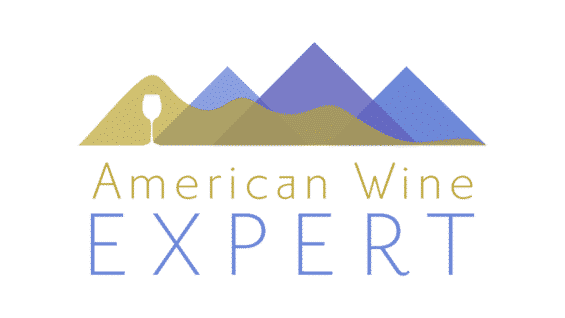


Nothing says summer like a road trip. If you’re planning a trip to “wine country,” you should know that no longer exclusively means California.
New York, New Mexico, Arizona, Idaho, Washington, Kansas, Missouri, Minnesota, Washington, and Maine all earned international awards at TEXSOM. These determined and resourceful winemakers are proving you CAN produce stellar wine across the U.S.
And we can’t think of a better time to celebrate that.
In honor of the exciting changes happening in America’s wine landscape, we decided to overhaul our American Wine Expert™ certification — the FIRST and ONLY wine certification of its kind.
This month, we’re taking all of that knowledge and hitting the road to find the very best that America has to offer.
We’re looking for hidden gems in unlikely places, like Texas Tempranillo, which could easily pass for Gran Reserva Rioja. We also can’t wait to taste the honey-kissed Rieslings from Michigan, or the jammy, deep-colored reds from Virginia’s famous Norton grape.
We’ll be sending updates from the road all month, detailing our adventures and sprinkling some fun facts that celebrate the rich history and diverse terroir in the U-S-of-A.
So buckle up and be prepared for anything. There are many miles to cover and myriad flavors to explore…from bubbly Pinot Meuniers to Bordeaux-style red blends to crisp Viogniers.
Want to join us? Sign up this month for our American Wine Expert™ course for a deep dive on U.S. wine culture.
You can also taste your way across the States with our first-ever American wine kit, featuring samples from Virginia, Michigan, Missouri, New York, Texas, New Mexico, California, Oregon and Washington. Learn more


- Historically, California produced more than 90% of all U.S. wines. Today, it’s closer to 80%, meaning other states are stepping up.
- The most visited winery in the U.S. isn’t in Napa…it’s in North Carolina. The Biltmore Winery, located just outside of Asheville hosts more than one million visitors each year. The 8,000-acre-property includes prize gardens, working farms, extensive vineyards and a namesake mansion, The Biltmore, built by George W. Vanderbilt in the 1800s.
- Two out of three bottles of wine Americans drink are made in the U.S.
- America ranks fourth in the world in both winegrape growing and wine production (behind European powerhouses Italy, France, and Spain). We are #1 in the world for wine consumption.
- The biggest enemy to American wine wasn’t powdery mildew or pests. It was Prohibition. Many wine regions lay dormant until the 1970s. The past two decades in particular have brought an explosion of new U.S. wineries.
Surprised? You won’t believe what’s happening in American wine right now. Sign up for our newly revised American Wine Expert™ course.
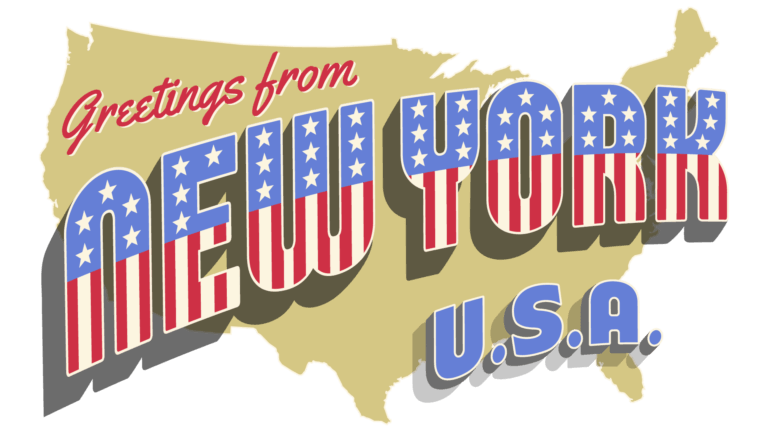
We appropriately begin our epic wine road trip in New York. While most of New York’s vineyards are hours from Manhattan, winemaking in this continental climate requires famous Big Apple determination. If you can make it here…
The saving grace comes from the state’s many large bodies of water, which help subdue the harsh swings between its short, hot summers and long, cold winters.
If you wanted to cover all of New York’s wine regions, you’d have to plan to stay a month or more. There are established AVAs in every corner of the state, from Long Island down south, to the Champlain Valley bordering Canada up north, to the regions hugging the Great Lakes on the West.
But we have our sights set on the Finger Lakes region, which has been turning heads in the wine world the past few years for its Rieslings.
The popularity of the region has grown considerably. In 2018, it was voted the top wine region in the USA Today 10 Best Readers’ Choice national poll.
As the name implies, this idyllic New England farmland is streaked with thin lakes…the most notable being the Keuka, Seneca, Canandaigua, and Cayuga lakes. The glacially-designed bodies of water help moderate the climate, while surrounding hills provide ideal drainage.
We start our tastings at Wagner Vineyards, one of the oldest and most recognized wineries in the region. Centrally located on the eastern shore of Seneca Lake, Wagner is a great place to start given its impressive selection of 30 award-winning wines in both red and white, ranging from bone dry to dessert wine sweet.
Hear what Wagner Vineyards has to say about making wine in New York
Watch the interview
While the Finger Lakes are known for their cool climate whites, such as Riesling and Gewurztraminer, they also produce notable red varieties such as Pinot Noir, Cabernet Franc, and Merlot.
With 500 wineries in the whole state (and more than 100 in the Finger Lakes) we wish we had more time, but there’s many miles before we sleep.
Next up on our trip: Virginia. While the South enjoys a genteel reputation, we understand growing grapes there is anything but hospitable.
Don’t have time for the +5,000-mile journey?
You can still learn (and taste) all the States have to offer with our newly revised American Wine Expert™ course.
Sign up and receive our 12-sample wine kit featuring selections across the U.S.

- New York was one of the first states to produce commercial wine. One of the oldest, continuously operating wineries in the U.S. is in New York’s Hudson Valley.
- New York is the third largest wine producing state in the US, but in the late 19th century it competed with California for the top wine region in the U.S.
- Dr. Konstantin Frank was the first to prove you can grow Vitus Vinifera in Upstate New York. His work in the 1950s and 1960s in the Geneva research station was critical in establishing today’s wine regions.
- 80% of vineyard land in New York is planted with vitis Labrusca–a grape variety primarily used for juice!
- New York’s 11 AVAs depend on large bodies of water for the “lake effect.” This ranges from the Atlantic Ocean on Long Island, the Hudson River in the south, the Great Lakes to the west, and the Finger Lakes mid-state.
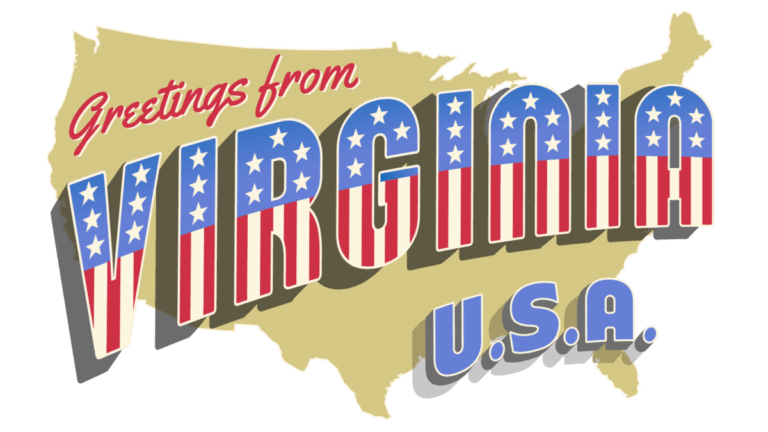
New York > Virginia: 298 miles
We’re leaving somewhat cooler climes and heading south to the 10th largest wine-producing state in the country — Virginia. It’s a mere 300 miles from Seneca Lake to the northernmost wineries in Virginia, but top-rated producers are scattered throughout the state.
In fact, you could taste your way from the Maryland border all the way to the southwestern edge of the state near North Carolina. But some of Virginia’s most celebrated producers are clustered around Charlottesville, nestled in the foothills of the Shenandoah Mountains.
Winemakers in the area say you can taste the mint in the grass, and smell the blooming magnolias and honeysuckles that blanket Virginia’s lush landscape. It sounds dreamy, but producing fine wines in the South can feel like a nightmare. Thick humidity and pests are expected. Muggy, long summers and freezing winters are guaranteed.
Still, Virginia winemakers have the grit and adaptability to consistently produce aromatic, expressive and beautifully balanced Viognier, Petit Manseng, Chardonnay and others. Reds include Cabernet Franc and Petit Verdot.
However, the variety that put Virginia on the map is Norton — America’s oldest wine grape. Known for its rich aroma and black fruit flavors, Norton is a deeply-colored wine that ages exceptionally well. At one point, there was talk of making it Virginia’s official state grape, and many passionate Virginians have gone to great lengths to preserve it.
We’d love to linger in the charming Virginia countryside, wine glass in hand but the next leg of our journey is a daunting 800 miles. Tune in next week as we cover another hidden American gem: Michigan!
Don’t have time for the +5,000-mile journey?
You can still learn (and taste) all the States have to offer with our newly revised American Wine Expert™ course.
Sign up and receive our 12-sample wine kit featuring selections across the U.S.

- Virginia was one of the first wine-producing colonies.
- In 1873, Norton wine from Virginia won “best red of all nations” at the Vienna World Fair.
- Prohibition nearly killed “America’s Grape” as vines across the country were ripped out. Thankfully some Norton vines were hidden away and saved.
- Passionate Norton advocates in Virginia are staging its comeback, such as Jennifer McCloud with Chrysalis Vineyards.
- From 1779 – 1781, Thomas Jefferson tried to plant Vitis Vinifera and hired famous winemakers to try and make it successful. Ultimately the Southern climate and phylloxera proved too challenging.
You think Virginia has wine history…we’ve only just begun! Learn more stories by becoming an American Wine Expert™.
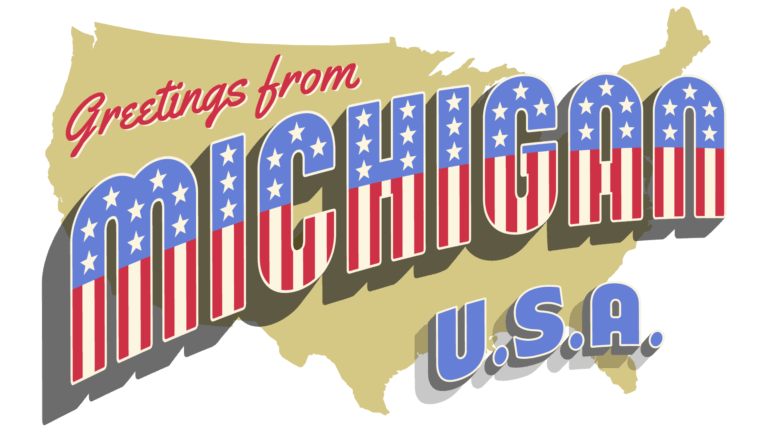
Virginia > Michigan: 813 miles
Time to head north…way north. While Michigan is perched at the very top of the United States, its position on the 45th parallel aligns it with many notable winemaking regions, including the Rhone Valley and Bordeaux in France, Italy’s Piedmont region and Oregon’s Willamette Valley.
So how does one grow grapes in a region famous for brutal winters? Two words: Great Lakes. As with most American operations, Michigan wineries depend on the large body of water to round out the sharper points of each season.
But it’s still no picnic. While Michigan wineries make it look easy, surviving a Michigan growing season requires supreme adaptability. Some seasons offer warm weather from May until October. Others bring cool, rainy summers and freezing falls.
Producers such as Soul Squeeze Cellars adapt to whatever Mother Nature dishes out. When cooler temperatures deliver high acid and low sugar, they turn to sparkling. Other times, they’ll harvest through the night, when the timing is perfect for ice wine.
Hear what Soul Squeeze Cellars has to say about making wine in Michigan
Watch the interview
Planning a trip to Michigan wine country is rather simple. The state’s finest wineries are in the northwest corner of the “mitt,” huddled on two peninsulas stretched into Lake Michigan: Leelanau and Old Mission.
This is where you’ll find the cool climate whites that have put Michigan on the map…Rieslings, Gewurztraminer and Pinot Blanc. While Riesling is the leader of the pack, hybrid Traminette has been winning awards lately.
Driving to the peninsulas, we’re struck by the beauty of Michigan wine country: rolling hills, thick forests, fruit orchards, vineyards and of course the vast Lake Michigan. Tasting rooms range from stately estates to quaint, cedar shake structures.
Traverse City, situated at the base between Old Mission and Leelanau, has a bustling downtown riverfront and budding farm-to-table restaurant scene. Taking in all the sights of this small but potentially mighty wine region one thing is clear — don’t underestimate Michigan wine.
Tomorrow it’s off to another unexpected wine region: Texas.
Car in the shop? You can still taste Michigan wine (and many others) when you sign up for our American Wine Expert™ course — now available with a 12 sample wine kit. Enroll now.

Despite harsh winters, Michigan knows how to grow grapes (from Welch’s to wine). Many of the state’s 13,500 vineyard acres are devoted to juice grapes, Niagara and Concord. But when it comes to wine grapes, an impressive 70% are of the vinifera variety.
This allows wineries to be incredibly versatile, creating everything from Alsace-style crisp whites to deep Cabernet Francs.
Michigan is relatively small but potentially mighty. With more than 600 wineries, it ranked 7th in the U.S for wine production in 2016.
- New York was one of the first states to produce commercial wine. One of the oldest, continuously operating wineries in the U.S. is in New York’s Hudson Valley.
- In 2016, Michigan ranked 7th in wine production, despite having only a little over 100 wineries.
- 70% of Michigan’s wine grapes are of the vitis vinifera variety.
- Michigan has a staggering 12,600 vineyard acres, but 90% of the harvest is Concord or Niagara for juice or jelly. Michigan grows more Niagara than any other state.
- One of the most planted wine grape varieties is Riesling. Other important varieties included Pinot Gris, Chardonnay, Pinot Noir, and Cabernet Franc.
If you find this fascinating, you’ll love the stories from nearly every state in our American Wine Expert™ course. Register now.
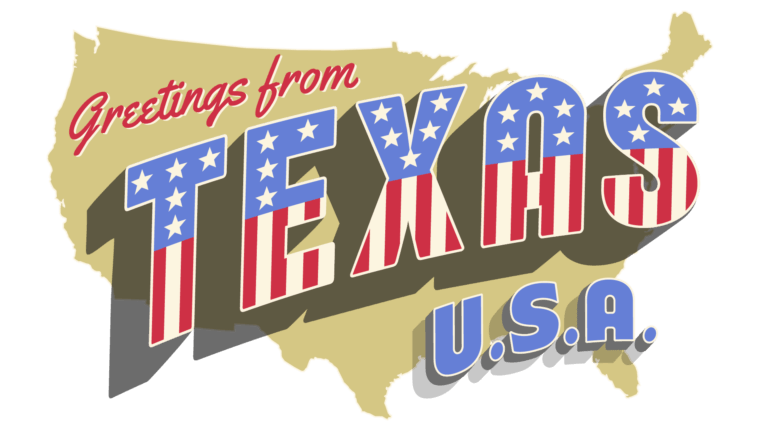
Michigan > Texas: 1,514 miles
We’re on our way to Cowboy Country…a land famous for big skies and big hair. So it comes as no surprise that wine in the Lonestar State is a big deal. Texas wine country is one of the United States’ most visited wine regions. Roughly 5 million people visit the Texas Hill Country AVA each year.
Growing grapes in Texas takes true grit. Drought, hail, high wind, spring frost, disease, pests and painfully hot summers; Texas viticulturists fight it all. They get knocked down time and again, but they always get back up.
The dry conditions and sandy soils of Texas actually work in its favor (with irrigation). Most grape growing takes place at higher elevations in Texas’ High Plains, where grapes enjoy long days of sunshine and cooler temperatures at night.
While being a Texas winemaker is challenging, visiting wine country couldn’t be easier (unless you’re driving from Michigan like us.) The most exciting wineries are centered around Fredericksburg, a picturesque town offering “Old West” charm and exciting “New World” wines.
Located a stone’s throw from San Antonio and Austin, most take a direct flight and use Fredericksburg as a home base to visit the more than 100 wineries in the Hill Country (there are more than 800 in the state).
The most planted grape variety in Texas is Cabernet Sauvignon. But if you make the trek to Texas you must try the Tempranillo, which is reminiscent of a Gran Reserva Rioja.
While Texas wine culture may include cowboy hats and pick up trucks, it would be a mistake to not take it seriously. At this year’s International TEXSOM Wine Awards, Texas wineries garnered an impressive 185 awards, compared to 104 for Washington and 85 for Oregon.
The next leg of our journey is another long one. We’re heading west and trading hills for impressive mountains in Idaho.
Suffer from car sickness? You can still begin your journey to becoming an American Wine Expert™. Sign up today!

- Franciscian monks brought more than religion to Texas. In the 1600s they planted the Mission (Criolla) grape near El Paso.
- Texas opened its first commercial winery in 1882. As California’s popularity took off, Texas faded into obscurity until the 1970s when a few pioneering winemakers planted the first vines.
- Texas horticulturist Thomas Munson won an award for his vinifera-grafted American rootstocks that were shipped to France.
- The most planted grape variety in Texas is Cabernet Sauvignon.
- Texas Hill Country AVA near Fredericksburg is the most well known in Texas, but an estimated 85% of all Texas grapes are grown in the Texas High Plains AVA.
You think Texas has wine history…we’ve only just begin! Learn more stories by becoming an American Wine Expert™.
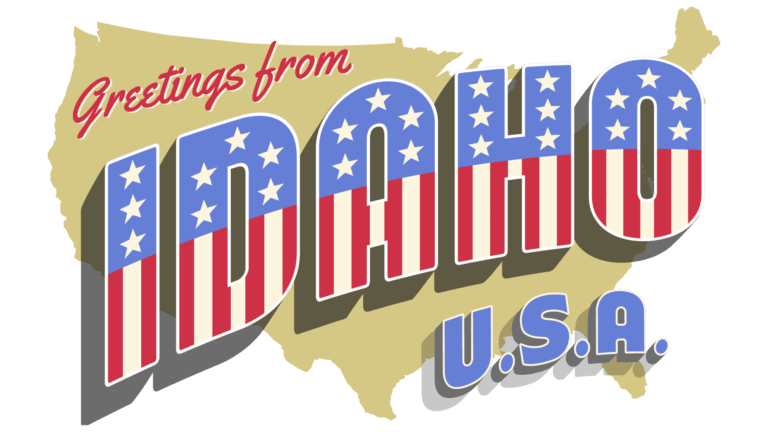
Texas > Idaho: 1,589 miles
The trek from Fredericksburg, Texas to Idaho’s wine region takes you through the deserts of New Mexico, the Rocky Mountains of Colorado and the Great Salt Lake of Utah. After an epic (and scenic) drive, you finally arrive in the jaw-dropping Snake River Valley AVA.
The majority of Idaho is covered in towering mountains. But in the southwestern corner, a sliver of a valley has been carved out by the Snake River. And there’s more than meets the eye in this rugged landscape that has been shaped by both fire and water.
At one time in its geological history, this area of Idaho was riddled with volcanoes. As the earth’s crust sagged, a basin formed that was filled with wetlands and lakes, the largest now known as Ancient Lake Idaho. It’s highest water mark — around 3,400 feet elevation — now forms the boundary of the Snake River Valley AVA.
Today, driving through the region you see shining white hills of chalk, dark columns of basalt and beds of volcanic cinder…all which form a rich terroir for just about any grape. Dominant varieties include Chardonnay, Riesling and Viognier, but the rather “new” wine region is trying a bit of everything. (It recently became an official AVA in 2007).
The underlying cinder in the soil inspired the name of our first stop in Idaho: Cinder Wines. This urban winery opened in 2008 and has quickly gained recognition for its Viognier, Tempranillo and Syrah. Located just 10 minutes from downtown Boise, it’s an easy jumping off point for an Idaho wine adventure.
There are numerous urban wineries to explore in Garden City, but you shouldn’t stop there. Head west about 40 minutes to Caldwell to see the state’s more long-established vineyards, including Ste. Chapelle — Idaho’s first winery in 1976.
While Idaho may have been a little late to join the viticulture revolution, it’s been quick on the uptake. With ideal grape-growing conditions and plenty of room to expand, we’re excited to see what the next decade will bring.
Next on our journey, we’ll cross the border to a major player in America’s wine scene: Oregon. Can’t take a month off work? You can still enjoy an epic learning journey with our newly revised American Wine Expert™ course.
Sign up now and receive our 12-sample wine kit featuring selections across the U.S.
Hear what Cinder Wines has to say about making wine in Idaho
Watch the interview

- While Idaho enjoys ideal grape growing conditions, it was still late to the proverbial picnic. The oldest winery in the state is Ste. Chappelle Winery, which opened in 1976. But the region’s largest and most celebrated AVA — Snake River Valley — didn’t become official until 2007.
- The architect for Ste. Chapelle was a fighter pilot that was covering President George H. Bush when his bomber was shot down in 1944 in Japan.
- There are only about 1,300 acres of vineyards in Idaho, but tens of thousands of potential vineyard acreages exist.
- Vineyard elevations reach up to 3,000 feet above sea level, which are some of the highest in the U.S.
- Two out of Idaho’s three AVAs are shared with other states. The Snake River Valley AVA is shared with eastern Oregon, and the Lewis-Clark Valley AVA is shared with Washington.
You think Idaho has wine history…we’ve only just begun! Learn more stories by becoming an American Wine Expert™.
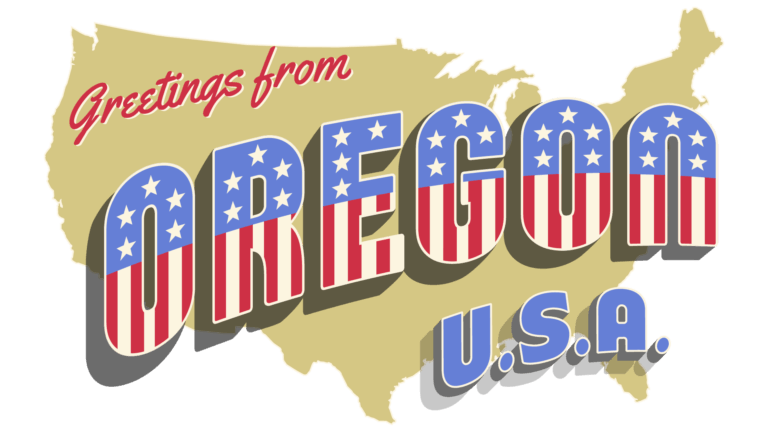
Idaho > Oregon: 475 miles
We’re trading rugged mountains for rolling hills as we cruise west to the world-famous Willamette Valley. Most American wine drinkers know that Oregon is a world-class wine region, and that Pinot Noir reigns supreme.
But did you know that serious wine production didn’t begin until the 1960s? And that everyone told the wine pioneers they were crazy to try and grow grapes in Oregon? Luckily they didn’t listen, and they went on to become “Old World” disruptors within a decade of setting up shop.
There are 21 AVAs in Oregon, with regions to the north (bordering Washington), the east (bordering Idaho), and sandwiched between the Coastal and Cascade mountain ranges on the west. The most revered of all of those is the Willamette Valley AVA, with the center of the action existing between the towns of Newberg and McMinnville (just 20 to 30 miles south of Portland).
Pinot Noir is Oregon’s signature grape, accounting for nearly 60% of the 2019 harvest. However the second leading variety is Pinot Gris, rather than the Burgundian counterpart Chardonnay. That’s because the first Chardonnay vines were of a biotype that was ill-suited for the Oregonian climate.
Plentiful sun, nutrient-rich volcanic soil and a temperate climate all contribute to Oregon’s success as a wine region. But the producers’ commitment to sustainability and quality can’t be overlooked.
Oregon has the strictest label laws in the U.S. Any wine bearing an Oregon place/name (state, county, AVA) must use 100% Oregon grapes, with 95% from the named place. Federal rules only require 75% of the grapes come from the named county.
Packing nearly 600 wineries in a 150-mile stretch, you could spend weeks in the Willamette Valley alone. But if we’re to finish up our American Road Trip this month, we must be moving on. Next up? Washington state.
If you’re not a road warrior you can still begin your journey to becoming an American Wine Expert™. Sign up and receive our 12-bottle wine kit featuring selections across the U.S.

- Oregon’s grape-growing history began in the 1840s, for the most part using native American grape varieties and hybrids imported from the East Coast, but vineyards were small and tentative throughout the 19th century.
- In the 1960s, UC Davis graduates were the pioneers of the modern Oregon wine movement. Within 10 years, Oregon Pinot Noirs were on the world map. Within 40 years, they had established a world-class wine region.
- In 1979, Eyrie Vineyards’ Pinot Noir was ranked in the top 10 among famous Burgundy wines. Appalled, French powerhouse Maison Joseph Drouhin organized a rematch in 1980 and Eyrie won 2nd place. Soon after, Drouhin opened a winery in Oregon.
- Pinot Gris was the top white grape in Oregon for a long time. Chardonnay suffered for a long time because they were using the wrong clone.
- Many Oregon vineyards are planted at elevations above the 200-foot high-water mark of the prehistoric Missoula Floods, where poorer soils cause the vines to produce fewer but more concentrated grapes.
Oregon isn’t the only state with a fascinating backstory. Learn how each state got its start by becoming an American Wine Expert™.

Oregon > Washington: 280 miles
We’re ending our epic road trip in the highly underrated (and somewhat undiscovered) wine region of Washington State. The dry, sunny vineyards irrigated by large, glacial rivers mean Washington can grow just about any variety well.
But their ability to do all things well, and a reluctance to pick a signature grape, has meant they sometimes play second (or third) fiddle to their West Coast neighbors. Although that’s changing of late.
Grapes are BIG business in Washington — literally. You can drive nearly 3 miles and cover just one side of a 2,000-acre vineyard. This “big vineyard” approach means the majority of these growers focus only on viticulture.
The regions’ some 1,300 wineries then buy grapes from these big vineyards. As a result, urban wineries have sprung up throughout Seattle and Woodinville, where they can easily sell directly to in-state consumers. Sadly this can result in poor distribution outside of the state for smaller operations.
In other words, to truly experience Washington wines you have to visit. Again, you may not see a lot of actual vineyards, but large tasting rooms are found throughout the state. Seattle, Woodinville, Yakima Valley and Walla Walla are all popular choices. The trick is to notice which vineyard the wine comes from, which is noted on the bottle.
The one appellation you cannot miss in Washington is Red Mountain. It’s a small AVA in total area, but one of the biggest in reputation. With a scant 6 to 8 inches of annual rainfall, Red Mountain growers precisely control how much water their grapes get — intentionally producing smaller, more highly concentrated grapes.
The results are exceptional red wines that linger in your mouth and fill out your palate. Dominant varieties include Cabernet Sauvignon, Merlot, Syrah and Cabernet Franc.
Is your mouth watering yet? Our journey has come to an end, but yours has just begun if you signed up for our
American Wine Expert™ course.
Sign up and receive our 12-sample wine kit featuring selections across the U.S.
Hear what Aquilini Wines has to say about making wine in Washington
Watch the interview

- Washington grows all varieties well. While they produce excellent wines, their failure to pick a signature grape has historically caused them to be overshadowed by their West Coast counterparts.
- The earliest viticulture in the state was in 1825, with the first commercial vineyard planted in the Puget Sound area in 1872. However, it was not until the 1960s that a significant wine industry developed in Washington, led by the state’s two dominant wineries, Chateau Ste. Michelle and Columbia Winery.
- Washington State is the second-largest producer of grapes in the United States, after California.
- When a wine has “Washington” on its label, state law requires that the wine contain a minimum of 95% grapes grown in Washington. Federal law requires only a 75% minimum when the state is used as the wine’s place of origin.
- The Columbia Valley AVA in Washington is the second largest AVA in the U.S., covering 17,000 square miles.
Want to dive deeper? Our newly revised American Wine Expert™ course includes fascinating facts from nearly every state in the U.S.
